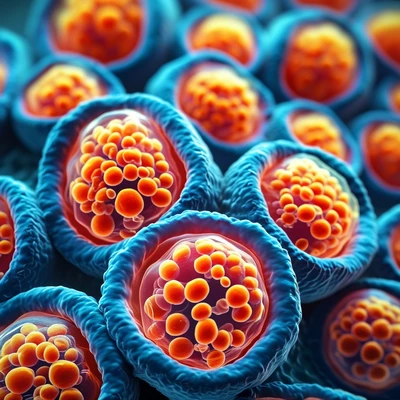A recent study led by Paul DeCaen, Ph.D., associate professor of Pharmacology, has uncovered novel molecular mechanisms through which genetic mutations in the PKD2 gene cause the most prevalent form of polycystic kidney disease, according to findings published in the Proceedings of the National Academy of Sciences.
Proceedings of the National Academy of SciencesPKD2 encodes an ion channel located in the primary cilia of cells lining the renal collecting ducts, a network of tubules and ducts essential for maintaining body's electrolyte and fluid balance. Mutations in PKD2, whether inherited or acquired, are known to induce autosomal dominant polycystic kidney disease (ADPKD), characterized by the formation of fluid-filled cysts that may lead to kidney failure and other serious complications.
According to the National Institute of Diabetes and Digestive and Kidney Diseases, ADPKD affects one in 1,000 people, with over 95% of patients carrying disease-causing genetic variants in PKD1 or PKD2. However, no therapies currently exist that target these specific genetic variants.
"For over two decades, we've known about the genetic basis of this disease but have yet to develop a drug preventing cyst formation in those affected. To advance therapeutic development, I aimed to understand how these mutations modify the ion channel at the molecular level, both structurally and functionally," stated DeCaen.
To better analyze these genetic variants, DeCaen's team employed various approaches, including direct cilia electrophysiology, cryogenic electron microscopy (cryo-EM), and super-resolution imaging to study ADPKD cells expressing PKD2 mutations.
Proceedings of the National Academy of SciencesThe researchers discovered three germline missense variants—C632R, F629S, and R638C—located in the pore helix region of PKD2 that result in defects in ion channel function, assembly, and cilia trafficking.
"Although all three mutations affect the same area of the channel, they have distinct and unexpected effects," DeCaen pointed out.
Specifically, while F629S and R638C mutations impair PKD2's ion transport function, C632R causes misfolding in the channel protein leading to its complete dysfunction.
These findings offer promise for developing targeted therapeutic approaches tailored to individual patients based on their specific genetic profiles. For instance, a drug correcting channel misfolding might be most effective for those with the C632R mutation—an approach used successfully in treating conditions like cystic fibrosis.
Alternatively, patients with F629S or R638C mutations could benefit from therapeutics that restore channel function—a strategy applied to manage cardiac arrhythmias and other ion channel diseases, DeCaen explained.


